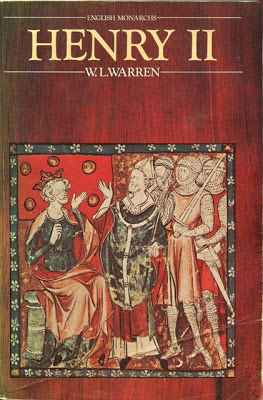FINDING PETRONELLA
Nothing is ever simple when it comes to researching Eleanor of Aquitaine.
her family and her affiliations. One
of the secondary characters in THE SUMMER QUEEN, is Alienor’s sister Petronella
(except sometimes she is not called Petronella but Ailith) who has proven fascinating but frustrating to research.
If Alienor’s birth date of 1124 took some digging,
then Petronella’s proved totally elusive. All that can be said is that if
Alienor was born in 1124, then Petronella was a younger sibling. We know
their mother died in 1130 and that Petronella was old enough to be involved in
a sexual relationship by 1141, and that she bore a child circa 1143/44.
It seems therefore likely that she was born fairly close to Eleanor, perhaps in
1125 or 1126. However, we have no birth date for their brother William Aigret,
who died around the same time as their mother in 1130. Some biographers say he
was first born, others that Eleanor was first born. (here we go again with the
biographies not being reliable in their evidence) No one seems to know, and
William’s birth order may have affected the dating of Petronella's birth. Still,
in the great scheme of things, it’s a minor conundrum.
With regard to Petronella's alternative name, I do
wonder if she was baptised Aelith but known as Petronella. Perhaps because her
birth date was close to the feast of St. Petronella on the 31st of
May, and perhaps because St. Petronella had associations with Charlemagne from
whom she and Eleanor claimed descent. It may also be telling that the
cathedral in Poitiers is dedicated to St Peter, who seems to have loomed large
in the lives of the Dukes of Aquitaine and Petronella is the feminine form
of the name. Or of course, she could have been baptised Petronella.and
called Ailith. Or Eleanor may have had two sisters – perhaps Aelith was
illegitimate. The mention of Ailith comes from existing documentation concerned
with the Abbey of St Mary of Saintes. Perhaps Aelith was a nun? I
don’t know. I feel probably not, but it is still there as a consideration
when pondering all the possibilities.
Here is a letter from 1140 naming the sister known
as Aelith. It’s also interesting to see ‘Eleanor’ rendered in Medieval
Latin. I have bolded Aelith’s name in the text.
Original letter:
1140,
December 28
Ego Helienordis, Francorum regina, et Willelmi
ducis Aquitanici filia, hoc donum, sicut rex vir meus concessit Beate Marie
Xancton[ensi] ecclesie, sic concessi et hujus [sign of cross] impressione
confirmavi, et in perpetuo habendum Sancte Marie et Agneti amite mee ejusdem
loci abbatisse, et omnibus ejus successoribus in eadem die, non in eodem loco, confirmavi;
videntibus Aienrico de Niela, Aelith, sorore mea, Maengo
de Bono Occulo, Arveo panetario, et pluribus aliis.
Translated letter:
I Eleanor, queen of the Franks, and daughter of
William duke of Aquitaine, have granted and confirmed by this mark, the gift as
the king my husband granted it to the church of Blessed Mary of Saintes, to be
held in perpetuity by St. Mary and Agnes, my aunt, abbess of that place, and
all her successors, I confirmed it on the same day not in the same place: with
witnesses Aienric (Henry?) of Niela, Aelith my sister, Maengo of
Bono Occulo, Arveo my steward, and many others.
We do know that in 1142, Petronella, then in her
early or mid teens, began an affair with King Louis’ much older, war-scarred
second cousin, Ralph of Vermandois. He had lost an eye in a siege, when
struck by an arrow, but as well as being a warrior, he was a valued and
experienced courtier. He also had a reputation for liking the
ladies. Chronicler John of Salisbury tells us that even when ordered to
abstain from intercourse by his doctors, he paid them no heed because he was
‘very uxorius’. He was married to one Leonora. Some biographers say she was the
niece of Count Theobald of Blois (Ralph Turner, Douglas Boyd, Marion Meade,
Desmond Seward, Marjorie Chibnall, Amy Kelly) some say his sister (Alison Weir, Wikipedia) and some say first cousin (Ivan Goubry). You see what
I’m up against when researching?
Pertronella and Ralph were keen
to wed and three bishops – including Ralph’s brother, Simon Bishop of Noyon,
annulled Ralph’s marriage to Leonora. The Pope, on receiving a complaint from
Theobald of Champagne on his disparaged sister’s/niece’s/cousin’s behalf,
immediately reversed the annulment and put Ralph and Petronella under
interdict. Without going into masses of political detail, it caused tremendous political upheaval and was one of several reasons that war
broke out between France and Champagne.
Ralph and Petronella weathered the storm and
Petronella bore Ralph either two or (here we go again) 3 children. Sometime in
the early 1150’s she died…. Or did she?
Wikipedia says:
Raoul divorced in 1151, as he remarried the next
year. Petronilla remained a member of the French royal court and a constant
companion to her sister Eleanor while she was imprisoned by her husband King
Henry II in England and Wales. After Henry's death, Eleanor was freed, and
Petronilla planned on returning to France. Yet, records of Petronilla after
1189 are scarce. It is believed that she came down with a fever on her voyage
from England back to France and died in early 1190 before her arrival at port.
There are no sources given for this bit of
information, although the entire article is quoted as sourced from a French
work by Patrick van Kerrebrouck (2000). Les Capétiens 987–1328. Since
I have no access to this work, I can’t check the veracity or whether Petronella’s
death is mentioned in it. Records of Petronella before 1189 are hardly
leaping out of the woodwork, and I suspect that here ‘scarce’ is a euphemism
for ‘non existent.’
French Wikipedia says she died
after 1151 and that Ralph was widowed. ‘devenu veuf’ In 1152 he married
his 3rd wife Lauretta of Alsace.
Chronicler John of Salisbury writing circa 1164
says ‘She did not survive for
long; and though she bore a son and two daughters before her death.’…’
‘As for Count Ralph, he married his 3rd wife, a daughter of
Thierry count of Flanders called Laura.’This being from primary source it’s
more promising.
Then I came across
this online
url.http://fmg.ac/Projects/MedLands/AQUITAINE.htm#AelisPetronilledied1153
[Petronille] d'Aquitaine ([1125]-after 24 Oct 1151, bur
St Arnould in Crépy). The Chronicle
of Alberic de Trois-Fontaines specifies that "Alienor Guilielmi filia
comits Pictavorum et Aquitanie ducis" had two sisters one of whom
married "Radulfus…comes Perone et Veromandie", although he
does not name them. The Historiæ
Tornacenses record the wife of "Radulfem comitem" as
"germanam Alienore regine Francorum" but also do not name her. Robert of Torigny refers to the mother of the
infant children of "Radulfus de Perrona comes Viromandorum" as
"iuniore filia Willelmi ducis Aquitanorum" but he does not
name her either The Chronique de
Guillaume de Nangis names "Eléonore et Pétronille" as
the two daughters of "Guillaume comte de Poitou et prince d'Aquitaine",
recording in 1142 that Pétronille married "Raoul comte de Vermandois"
after he repudiated his first wife. The above source
has Petronella buried at the Priory of Saint Arnould de Crepy. Note the mention
of two sisters in the above source details. Which brings us back to
Aelith and Petronella as separate individuals rather than the same person.
Now, to further muddy the waters, the English Pipe
Rolls of 1155 to 1158 carry at least a hint that Petronella was
still alive after Ralph’s remarriage to Laura of Flanders and hadn’t died as
John of Salisbury says. There is a reference to a Petronille in close proximity
to mention of the Queen with reference to payment of Danegeld in the Pipe Roll
for Essex of 1155, and it might be her sister. Then again it could be Petronella Countess of Leicester, we don't know. In the pipe roll of 1158, there is a reference to a payment for the passage
of the Queen’s sister (it doesn’t name her and the wording might refer to the King’s sister – in which case it would be an illegitimate one).
Alison Weir states: ‘During the period 1154-58, there are regular payments of generous sums for wine for Petronilla.’
Having trawled these same pipe rolls, I can find only one such entry and it involves bread as well as wine and does not name Petronella herself and is therefore ambiguous. The entries are far more likely to refer to Henry II’s illegitimate sister Emma, above mentioned, later to marry Dafydd ap Owain Gwynedd, prince of North Wales.
Conclusion. Until more evidence turns up, my personal belief, based on the seriously muddled and contradictory evidence is that Alienor definitely had a sister called Petronella and that she married Ralph of Vermandois. They divorced, and Petronella either died or disappeared from the scene in the early 1150's. I think it very safe to say that the Wikipedia statement about her still being alive in 1189 is not true. I suspect it has been taken from a novel rather than being a provable fact. As everyone knows, while Wikipedia is a good starting point, it’s never, ever to be trusted. My inner jury is also out on the Aelith business. Two sisters, or one with dual names? It’s not within the brief of THE SUMMER QUEEN, but still an interesting conundrum.

































.jpg)
.jpg)

.jpg)


.jpg)

.jpg)